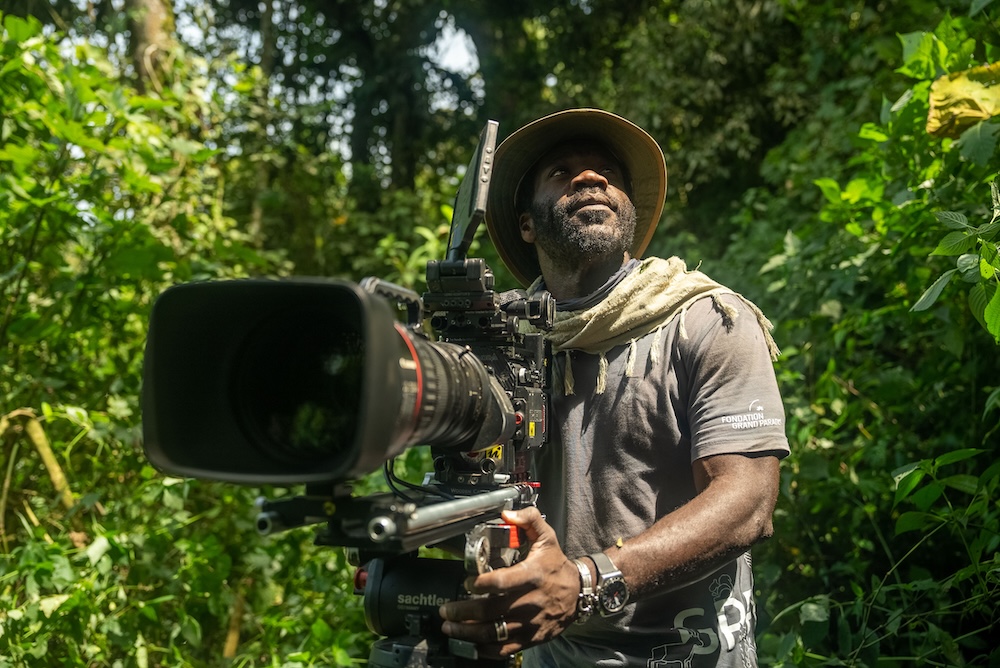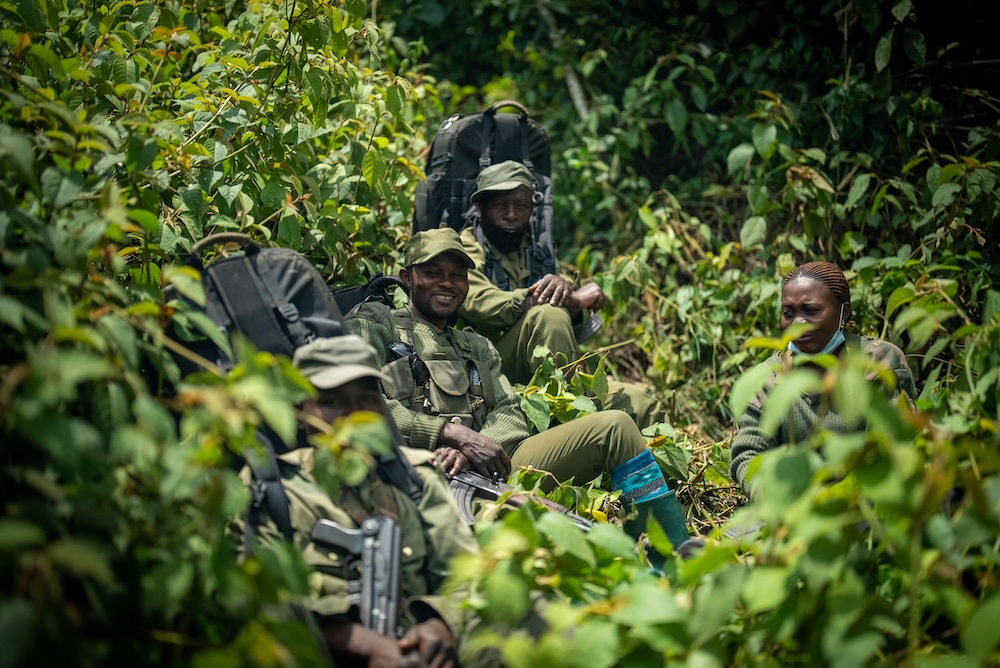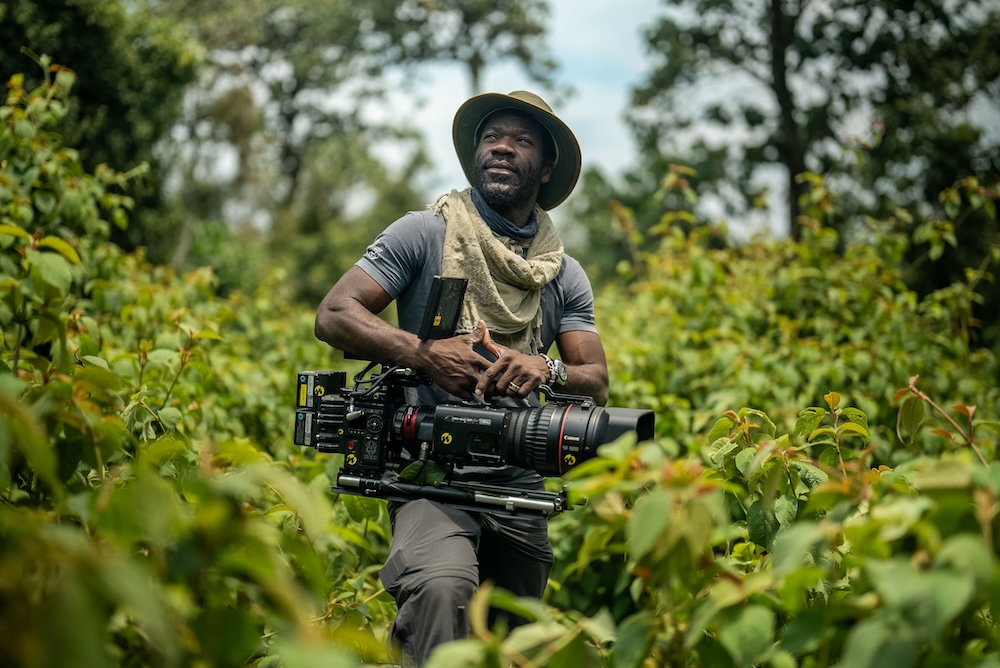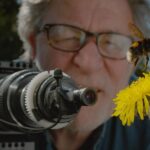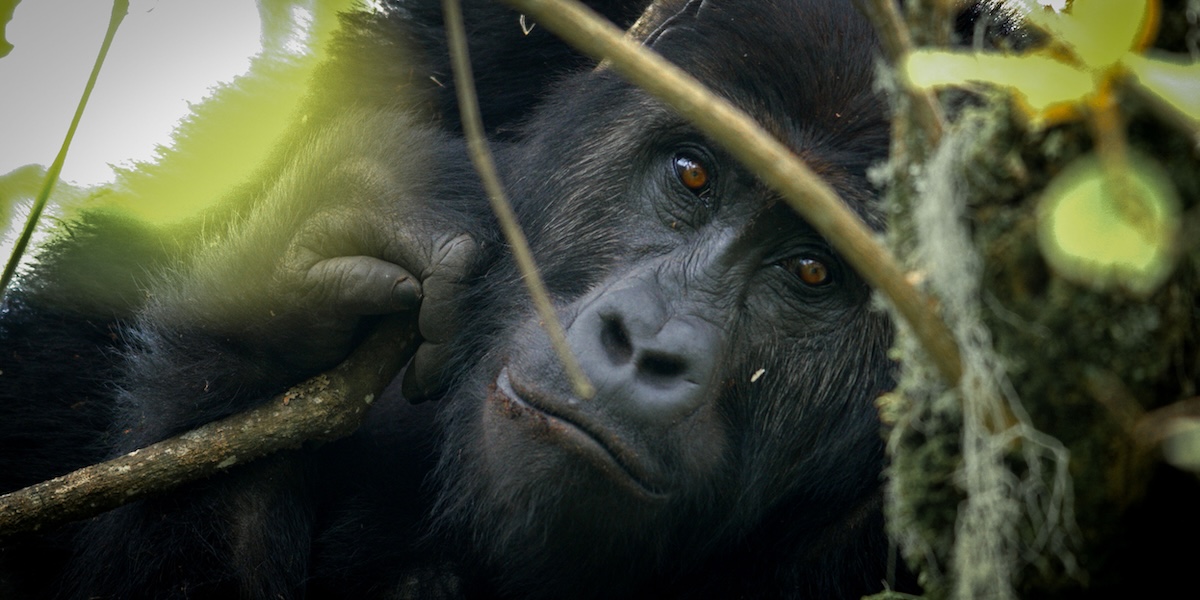
Walk on the wild side: Silverback
Posted on Mar 14, 2024
Heading up the post-production efforts for incredible BBC wildlife documentary Silverback, Stuart Chambers and his team embarked on a mission that went beyond conventional narratives
Words Robert Shepherd | Images BBC
BBC Two heavyweight Silverback stands apart from conventional wildlife docs, venturing beyond the typical narratives and delving deep into the profound human dimension of conservation. This documentary lays bare the unwavering dedication and impassioned valour of team members who willingly stake their lives to safeguard the legacy of majestic beings.
Invited by a team of conservationists at the Kahuzi-Biega National Park in the Democratic Republic of the Congo, the film – produced by Off the Fence for the BBC and France Télévisions – follows renowned wildlife cameraman Vianet Djenguet as he embarks on a close documentation of their tireless efforts to protect the eastern lowland gorilla: a critically endangered great ape and the largest primate on Earth.
“Anticipating three months’ worth of 8K RED footage shot in four languages, all within a jungle prone to visual uniformity, necessitated a strict clip-naming protocol which the filming team remarkably maintained, even in exceptionally challenging shooting conditions,” explains Stuart Chambers, the head of post-production for the 90-minute documentary. “As a BBC production, accuracy and authenticity are always extremely important.”
The film understandably contained mainly French-speaking contributors and required the translation of large amounts of this material to English. “With the help of French-speaking researcher Cora Coomasaru, we decided to leave those translations on screen, aligning the subtitles so they exactly reflected the words being spoken at that moment in time,” Chambers adds. “This work was completed before being sent through to the editorial team, allowing them to create sequences that were coherent and accurate. They were able to search for specific words in either French or English. This was vital, as we were also delivering this in French for co-production partner France Télévisions.
The team not only grappled with linguistic challenges, but also confronted numerous hurdles from an audio perspective. Chambers explains how the logistics of natural-history filming mean that much of the subject is shot using long lenses or with the camera running ‘slightly off-speed’. He continues: “Both of these mean that the sync sound is not usable; on a long lens, all you need is one grasshopper between you and the distant gorilla and the recording is dominated by the insect. The distance means it may be out of sync with what the camera is seeing and, if the camera is off-speed, the sound does not get recorded anyway.”
For those sequences, the production relied on a talented team of sound editors to source the correct sound effects and synchronise them with the edited pictures. Any movement sounds were generally recreated in Foley. Chambers says that films of this nature rarely budget for a production sound mixer, so the location sound is often compromised. “There’s no script before shooting a documentary, so contributors don’t generally say things as concisely as might be required for the finished film to tell its story. Therefore, the contributor dialogue heard in the finished film is often constructed from takes filmed on different days in different locations.
“Inevitably, there will be different background sounds, different levels and different microphone placements. This requires a great deal of work in the sound post-mixing to balance the dialogue tracks, filter and even out the background noise, and generally make it sound like natural speech.”
In addition, the post-production team skilfully employed sound design and background music to elevate the storytelling and emotional resonance of the documentary. Chambers emphasises that ‘without a soundtrack, a film has virtually zero impact’.
THE ART OF SOUND
In Silverback, where the audience gains insight into the appearance, habitat and daily activities of the gorillas, the synergy of dialogue, sound effects and music is integral to narrating the story. The artistry lies in knowing when and how to deploy these elements for maximum effect.
“It is often only when the audio is added that the audience gains proper emotional engagement with – as well as understanding of – the story,” Chambers continues. “The Silverback score was written specially for the film. This was a long process involving much dialogue between the director, picture editor and composer. The music is hardly ever ‘background’ in a film – as its primary function is in playing the more-important role of helping the audience to engage with the story on an emotional level.
“The natural sounds – or ‘sound design’ as people often call it – play a similarly vital role. They should help the audience in some way feel like they have a true sense of the place, to feel like they have visited the location, been among the gorillas and witnessed the drama. For example, the score can help build the drama and tension as the filmmakers finally get close to the gorillas. The screams and crashing undergrowth as the silverback launches towards the crew to protect his family helps the audience feel the real danger the crew faces.”
BACK HOME
Due to the editorial team being situated throughout the UK, the team adopted LucidLink cloud-based storage to share the video material at the offline editing stage. Chambers says: “This is a relatively new way for productions to work,” and moves away from traditional local drive storage workflows. “This connected our team members from around the country, giving us the ability to access, view and edit footage as well as instantly distribute between one another,” he adds.
“As the project continued, different stages joined the LucidLink workspace, creating a centralised hub for music composers, graphics companies and editors alike. As the camera rushes returned to our Bristol office, LucidLink could handle the growing project size, as it has no limit on capacity.”
QUALITY FINISHING
For the picture finishing, the post team conformed to the original camera files to maximise the footage quality and dynamic range. Colour choices were discussed with the post-production team and director Miles Blayden-Ryall. “This inclusive, collaborative effort utilised Off the Fence’s in-house Baselight grading system. The advantage is in real-time colour changes being applied and the subtlety of those changes,” Chambers says. “Many shapes were created to give emphasis to certain areas in the frame or highlight narrative points being made.”
The in-house colourist at Off the Fence, Jon Pembro, advised Chambers and his team to avoid excessive use of bright neon or yellow tones in the greens. The goal ‘was to prevent oversaturation of the image and maintain a balance, aiming for a beautiful and premium appearance with a touch of edge’. Pembro emphasised the need for grit in the image, steering clear of the oversaturated and overly bright look that has often been implemented in certain natural-history shows.
ANGER MANAGEMENT
While silverbacks – and gorillas in general – are not typically known for aggression unless provoked or agitated, the behaviour of Mpungwe, the primary silverback, was notably combative. His charges were exceptionally swift and initially posed challenges for filming.
“This behaviour was played in onspeed to capture the visceral feeling of the main protagonist,” Chambers says. “Later in the film, as we understand him more, these charges are played in offspeed, as we are suggesting that there is more to this behaviour than simply pure aggression.”
Of course, there is always a balance between factual accuracy and artistic licence required by the narrative. It is, as Chambers explains: “Staying true to showing behaviour and reality while constructing scenes in a way that will effectively tell the story.”
Silverback is available on BBC iPlayer
This story appears in the March 2024 issue of Definition. Read the full magazine here.


